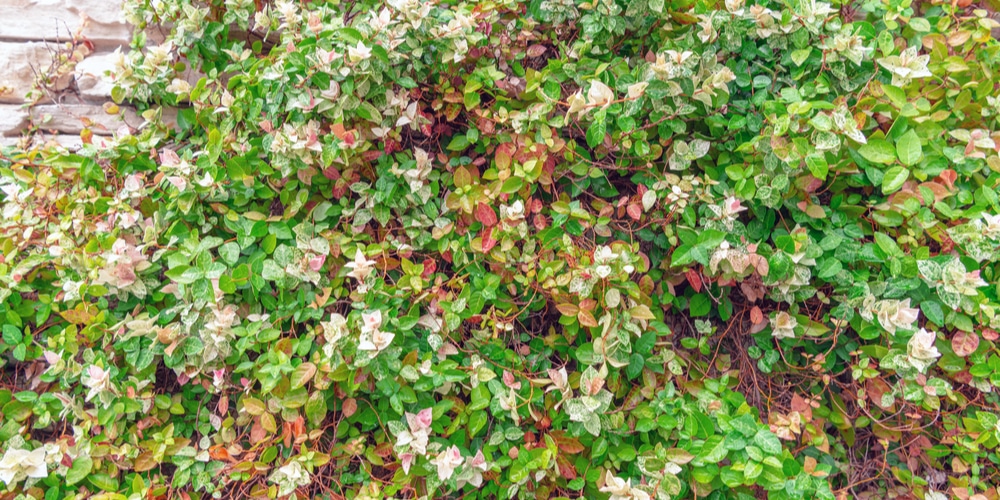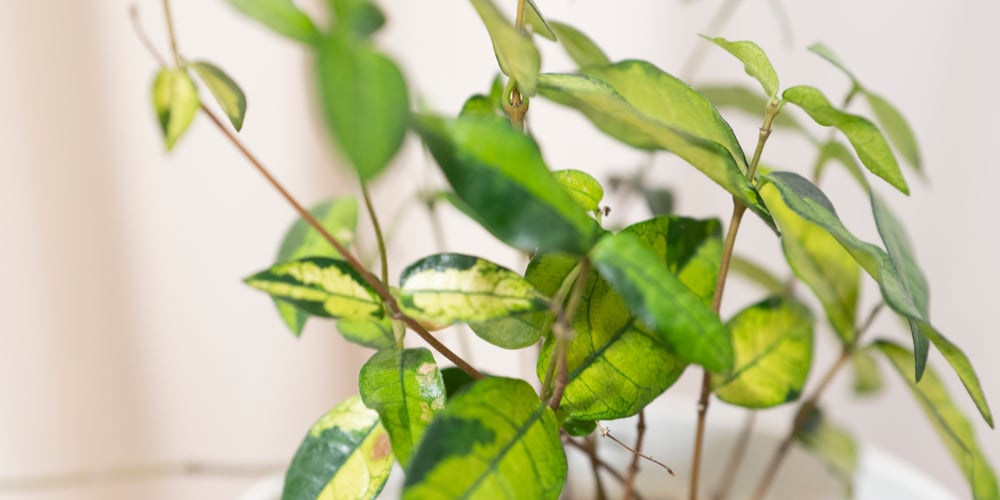Contrary to what the name suggests, Asiatic Jasmine (Trachelospermum asiaticum) has nothing to do with the white-flowering and fragrant plant. However, it does resemble the traditional Jasmine in its blooming.
Native to Korea and Japan, it is a fast-growing evergreen that many gardeners use as ground cover. The Jasmine part of its name probably refers to its flowers’ pleasant smell, which perfumes the air during the spring. Also, it produces stunning white or yellow blooms that can make any garden look more elegant.
To learn more about Asiatic Jasmine and how to take care of it, keep reading this essential guide. Here, we collected all the tips and tricks to make the best out of this relatively low-maintenance plant.
What you Need to Know About Asiatic Jasmine
Asiatic Jasmine is a fast grower. If you have an empty area you need to fill with something delicate-looking, consider adding this plant to your garden. Under optimal conditions, it can grow into a dense ground cover in as little as two years. Its foliage is dark green and glossy and can grow on the ground or around trees, fences, and other support structures.
It is a vine-like woody plant that requires little to no maintenance and stands as a perfect alternative to turfgrass. During summer, the plant produces delicate-looking fragrant flowers that will attract plenty of beneficial pollinators in your garden and infuse your outdoors with a delicious smell.
Asiatic Jasmine can be invasive: you must consider regular pruning to prevent it from taking over your garden. Plus, its leaves and flowers can be poisonous to dogs: try to keep them from munching this attractive plant.
How to Care for Asiatic Jasmine
Taking care of Asiatic Jasmine doesn’t require too much effort from your side. However, you must ensure you give it all it needs to thrive. To learn about this plant’s requirements, jump to the following section, where you will find all you need to recreate optimal conditions for this plant to grow.
Light
Asiatic Jasmine needs full sun to give you plenty of flowers. But if the temperatures get too warm, consider moving your plant under partial shade. Indeed, if you live somewhere where the sun rays hit harshly, you should provide your plant with some protection. You can plant your Asiatic Jasmine indoors in a hanging basket or pot. Ensure the container has drainage holes and place your plant next to a window for best results.
Water and Soil Needs
This plant performs best in moist and rich soil, but it can adapt to different conditions, provided that it receives enough sunlight. You can use a combination of clay, sand, loam, and organic matter. Keep the soil pH slightly acidic for best results: this plant does best between 5.5 to 7.0. Don’t forget to space your plants properly to give them enough room to grow.
With proper care, Asiatic Jasmine is tolerant to drought and hot temperatures. However, you will have to regularly water this plant to allow it to thrive. Remember that the water needs of an established plant are more forgiving than those of a newly planted species.
Adult plants can survive without water, making them suitable even for arid and desert-like regions. If you notice some wilting, consider increasing the watering frequency. However, avoid overdoing it, as you may cause your Asiatic Jasmine’s roots to rot.
Temperature Requirements
This plant can tolerate a wide range of temperatures but performs better in warmer conditions. If you live in regions where the summers get hot, consider growing your plant in partial shade to prevent it from sunburning. Under proper conditions, this plant will tolerate even low temperatures (not lower than 20F), but only for short periods.
What USDA climate zone can it survive?
This plant is perfect for USDA hardiness zones between 7b and 10. Indeed, it thrives in hot temperatures. It is drought-tolerant, meaning that it can thrive even in dry conditions.
However, it will need watering at higher temperatures. Avoid planting your Asiatic Jasmine somewhere too humid, as dampness might cause its roots to rot. Indeed, despite being native to Asia, this plant is not tropical and prefers dry conditions over overly humid ones. You can plant it at lower temperatures, but keep in mind that harsh winters will kill your plant.
Fertilizer
Fertilize your plant during spring and summer to enhance its growth and flower production. Do not feed your plant during the winter to avoid stimulating new growth that won’t survive through cold and frost. Choose a fertilizer high in phosphorous to encourage blooms. You can also make a natural fertilizer by using compost. Alternatively, add some mulch around your plants to increase the nutrient content in the soil and improve water retention.
Common Diseases
Asian Jasmine is strong and doesn’t suffer from diseases. You won’t have to worry too much about protecting your plant from harmful pests!
Common Problems
Asiatic Jasmine isn’t susceptible to disease or problems. However, it might suffer from fungal infections with too much water. If you notice some brown spots, you might have to treat your plant with a fungicide.
Instead, if you notice some wilting, consider increasing watering.
Propagation
The best way to propagate Asiatic Jasmine is from cuttings. Use clean and sterile scissors to cut a six-inches piece of stem from the tip of a vine shoot. Place your cutting in a container with drainage holes and general potting mix. Create a spot with your fingers to welcome your new plant.
Before sticking your stem to the soil, remove leaves from the bottom half and dip them into a rooting medium. Place the cutting into the hole and ensure you water it thoroughly. Locate it next to a window where it can get indirect light for most of the day. Consider covering it with a plastic bag to retain moisture and keep the ground warm enough to create roots. Water your new plant growth every day.
In about one month, roots will start to develop. At this stage, you should transplant your cutting in other containers to allow them to grow stronger. Once the cuttings are hardy enough, you can move them outdoors and plant them under full sun.


